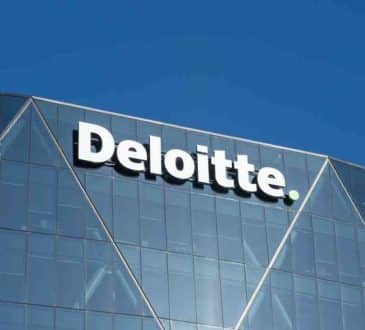Reputation Risk Management Is Vital For The C-Suite

Reputation risk management is hot. At a time when corporate leadership is in the crosshairs of investors, regulators, and everyone in between, risk managers are moving from back offices to corner offices and becoming leaders of enterprise-wide strategic teams, supporting the corporate mission by protecting the firms’ intangible assets. Company leaders are recognizing that 20th-century marketing strategies are no longer sufficient to manage 21st century intangible, high-impact risks like reputation. For members of both the executive and governance teams, reputation risk management must be enterprise-wide, include a multi-disciplinary group, be centrally coordinated by risk management, and be truly capable of influencing operations.
For CEOs, it is a minefield out there. As reported by the Financial Times in late September, a record number of CEOs lost their jobs last year. The numbers are trending even higher this year, according to Challenger, Gray & Christmas, the career tracking firm. Critically, according to the PWC consultancy Strategy&, financial underperformance was the second-highest reason; the number one reason was personal reputational impairment through ethical lapses. In no uncertain terms, the personalization of accountability for corporate missteps, legally and in the court of public opinion, poses a significant personal financial risk for these individuals.
For the governance apparatus, it is no less threatening as investors are rebelling. According to the Financial Times, investors are punishing directors on US boards at an unprecedented rate for failings ranging from excessive executive pay to poor independent oversight. There were 1,025 shareholder revolts on director re-elections in 2019 across the Russell 3000, up 23% from 835 in 2018, using the definition of a revolt as anything with 20% or more opposition.
Risk managers, once the procurers of insurances for fire damage, automobile wrecks and marine cargo exposures, are now using risk management strategies, insurances, and advanced concepts of behavioral economics to tackle enterprise level director, officer and brand exposures. As core leadership teams gauge more proactively whether corporate systems and governance align with stakeholder expectations, risk managers are now weighing in and influencing external communications that build reputational value and reputational resilience.
Strong enterprise risk managers, like others in the C-Suite, have always had the ability to move across corporate silos as they seek to identify and mitigate risks to both tangible and intangible assets. With big data making risk transfer associated with intangible assets like reputation possible, that type of coordinated, enterprise-wide approach is now more important than ever. It also creates an opportunity to promote internally risk managers as assets in and of themselves for the value they add to the company – putting in place coverages that not only transfer risk but communicate a compelling message to stakeholders about the company’s governance and operations. Pepsi, for example, recently engaged in a branding exercise for its own enterprise risk management team.
Risk management is also breaking out of its limited 20th century role. While risk managers were once procuring insurance coverages far removed from the strategic field of play, today they are leading teams to deter reputational crises and mitigate them when they occur.
Imagine, for example, an airline serving a moldy snack to several passengers on one of its flights. Imagine that one of those passengers is a social media influencer with millions of Instagram and YouTube channel followers. And perhaps also on that flight, witnessing it all, happens to be a prominent plaintiffs’ lawyer. Will they accept the airline’s apology, a refund, and perhaps some credit toward a future flight, or will conventional media see a stakeholder-friendly story that when promoted, will elevate the event into a reputational crisis for the airline?
When the airline responds to the complaints, will stakeholders accept the airline’s story and exculpate it – assuming this is an anomalous event in an otherwise well-run airline business? Or will stakeholders, influenced by both social and mainstream media, conclude that the event is a symptom of something larger – something that could easily happen again, or manifest as something even worse.
If risk managers were leading a team that cuts across corporate silos, the company would be able to respond with assurances about actual policies and procedures to protect food safety – and the governance structure ensuring adherence to that commitment. Doing so, rather than relying on a bland, generic statement, might enable the airline to dampen the media-fueled outrage, mitigate the damage and staunch the flow of negative information for long enough to give it time to tell its story in a more widespread, compelling fashion.
And the only way for the airline to have “enough” time, given the near instantaneous viral spread of negative content, is to have anticipated the scenario through an enterprise reputation risk management assessment and have already prepositioned simple, easy to understand, and completely credible favorable stories to the contrary.
The ideal – the ultimate goal of the signaling power insurance provides – is to prevent the outraged reaction from occurring or spreading in the first place. If the passenger’s social media storm is met by even a few customers who respond that, while it’s bad to get moldy food, they have confidence in the airline’s catering; or better still, have confidence that the airline’s catering business is committed to world class quality and safety practices, what a difference that would make.
The task of prepositioning evidence-based goodwill is not simple. It requires a close collaboration among a number of corporate silos under the capable leadership of the Enterprise Risk Management team. To speak in a simple, easy to understand, and completely convincing way about policies, processes, procedures and governance—marketing (both corporate communications and investor relations) need to be fully tuned in to the work products of enterprise risk management. In turn, enterprise risk management needs to deploy the elements that enable reputation resilience by being reducible to a credible story that an unaffected stakeholder can readily trust as authentic. Insurances help underscore a story’s authenticity.
Steel City Re has been analyzing corporate reputational value and resilience for years and underwriting reputational risk. Our analysis indicates that companies that utilize these types of reputation risk management practices, that view risk management as a function that touches on all aspects of the organization, including marketing and communications, and market their holistic reputational risk management strategy, are rewarded in terms of reduced risks to cash flows, credit costs, market cap, and retention and attraction of talent.
Enterprise reputation risk management in and of itself is a great story for marketers and investor relations professionals to tell. It demonstrates that the company has systems in place to protect reputational value that are comprehensive and proactive, that will hold up to vetting by outside third parties and are sufficiently solid to be insurable. When this is done well, marketing, investor relations, treasury, HR and others will be able to communicate to their key audiences about a company that manages operations in a way that supports the expectations it has set with stakeholders.
Written by Nir Kossovsky. Have you read?
For those who are planning their next business trip, read on for our list of the world’s best cities for bleisure travelers. As you continue to travel, we continue to listen: Here are the best hotels for business travelers to stay in Athens, Crete, Kefalonia Island, Corfu Island, Santorini Island, Halkidiki, Mykonos Island, Rhodes Island. Skiathos Island, Elounda (Crete) Kissamos (Crete) .
Add CEOWORLD magazine to your Google News feed.
Follow CEOWORLD magazine headlines on: Google News, LinkedIn, Twitter, and Facebook.
Copyright 2024 The CEOWORLD magazine. All rights reserved. This material (and any extract from it) must not be copied, redistributed or placed on any website, without CEOWORLD magazine' prior written consent. For media queries, please contact: info@ceoworld.biz








